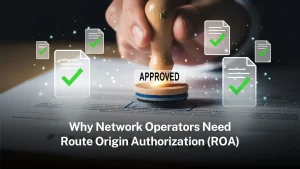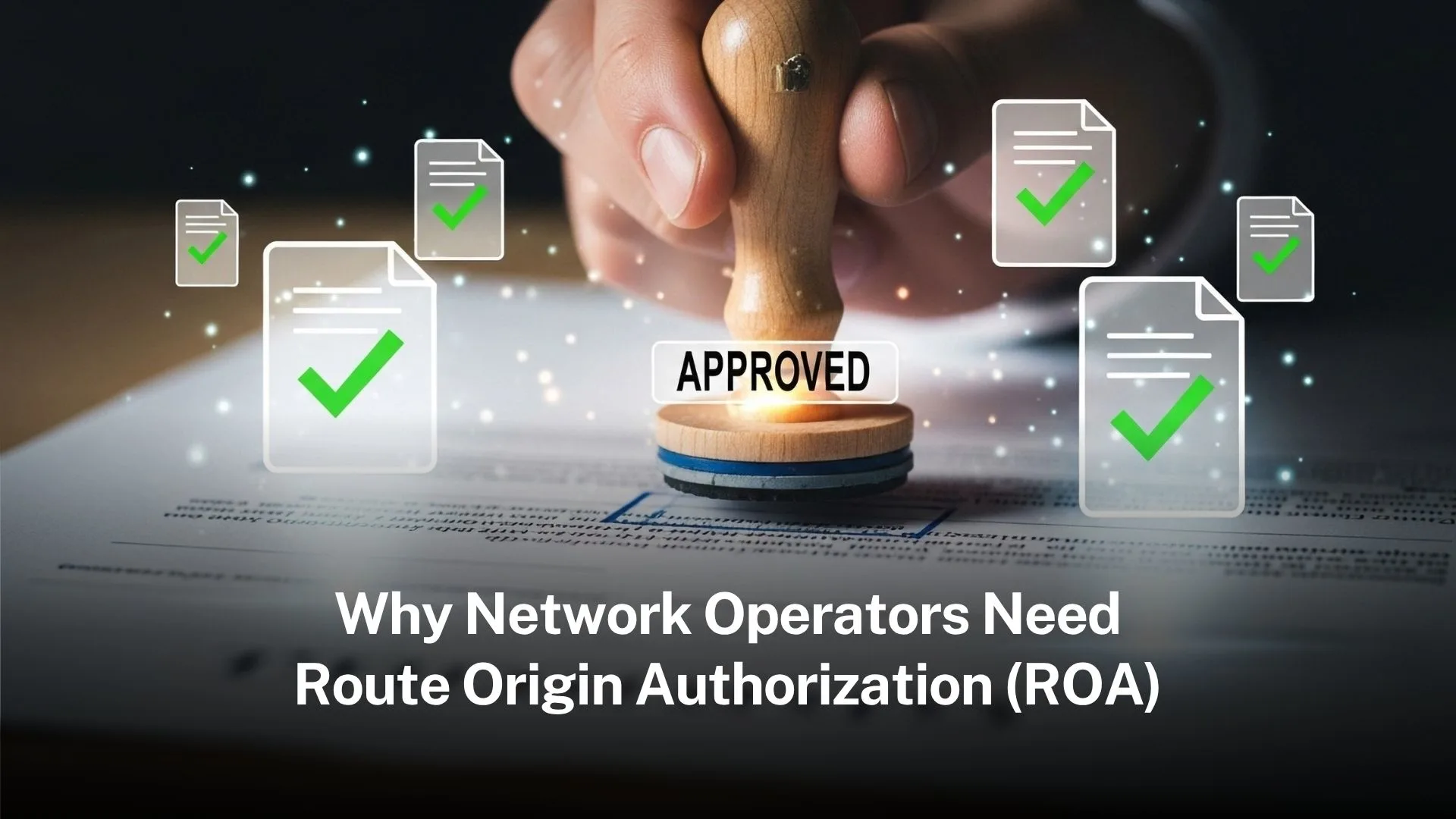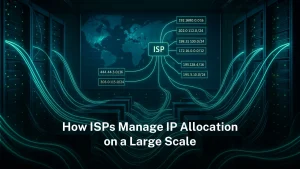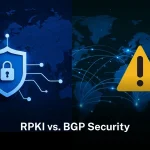
The internet moves because networks share routes. Each network tells others which paths lead to its addresses, and traffic follows those paths. For many years this sharing was based on trust alone. A network could say it owned a block, and the rest accepted it. In the early days this worked because the community was small, and mistakes stayed local. The world is different now, and one wrong line can ripple across many countries in a few seconds.
Route Origin Authorization, or ROA, was made to fix this weak point. It gives a simple way to prove who may announce a prefix. It also gives every router a way to check that proof before it accepts a route. When networks use ROA, false claims stop at the edge, and real paths stay open. This keeps users connected, keeps services steady, and shows partners that the operator cares about safety and order.The internet works because networks trust each other. BGP has weaknesses that can cause problems. RPKI helps make routing safer. It gives networks a way to check if announcements are real. Some networks use it, but not all. This article explains how BGP works, what RPKI does, and the issues operators face.
The Risk of Unverified BGP Announcements
BGP is the system that carries routes between networks. It spreads announcements quickly so that packets can find a path. But BGP does not ask for proof when it hears an announcement. It accepts the message and passes it on. This design made growth easy, but it also opened doors to error and abuse. A small typo can turn into a leak. A bad actor can claim a popular prefix and draw traffic away.
The harm is not abstract. Users lose access to sites and apps. Payments time out and emails bounce. Support lines fill with complaints while engineers search for a cause. Without a way to verify the origin of a route, the best teams can still be hurt by one false update somewhere far away. ROA brings the missing check and closes that gap.
Why Network Operators Need ROA Today
Traffic volume grows every year. New users come online, and new devices speak to new services. Pressure on routing tables rises, and so the cost of a single mistake rises too. In this world, a tool that prevents false origin claims is not a luxury. It is basic hygiene. ROA gives that hygiene and does it with clear steps that any operator can follow.
Partners also look for signals that a network is careful. They look for encryption, for change control, and for clear routing policy. ROA is now one of those signals. When an operator publishes correct ROAs and enforces validation, others see a team that plans ahead. That trust helps with peering, with customer deals, and with audits. It also makes daily work calmer because fewer bad paths reach production.
How ROA Stops Hijacks and Leaks
A classic hijack starts with a false origin. Someone announces a prefix that is not theirs. Without validation, many routers accept the claim and send traffic to the wrong place. With ROA, the mismatch between the false origin and the signed record is easy to see. The validator marks the route invalid, and routers can refuse it. The attack loses power because the first hop rejects it.
Leaks are often accidents. A provider exports routes that should have stayed private. A filter is missing, or a knob is wrong. ROA does not cure every leak, but it blocks those that include an origin that does not match the signed record. This limits spread and gives engineers time to fix the source. So users see smaller impact, and recovery is faster.
Creating and Managing ROAs
The first task is to list the prefixes you control and the ASNs that may originate them. The registry portal shows the current resources and lets you create ROAs. You enter the prefix, the origin ASN, and the maximum length that you allow. Then you sign and publish. The record becomes part of the global set that others will fetch.
Care does not end there. Networks change. New ranges come in, and old ranges move out. Upstreams change, and designs shift. ROAs must follow these changes or they become stale. A stale ROA can mark a good route invalid, which means traffic drops. A simple schedule helps. Review ROAs after each routing change, and do a periodic check even when things are quiet. This habit keeps validation on your side.
Validators and Their Role in Daily Operations
A validator fetches ROAs from all trust anchors, checks the signatures, builds a table of valid origins, and then serves that table to routers. It can run on a small VM or a container. Many teams deploy two validators in different places for safety. The routers connect over a simple protocol and ask for status on every prefix and origin they see.
The validator must stay in sync. If it stops, routers may treat many routes as unknown. Policies decide how unknown is handled, but good practice is to keep validators healthy so that unknown is rare and brief. Teams add monitoring, set alerts, and plan upgrades like they do for any other core service. With this care, validation stays fast and quiet in the background.
Testing, Monitoring, and Keeping ROA Healthy
A simple test is to publish a ROA for a lab prefix and announce it from the approved ASN. The validator should mark it valid, and the routers should accept it. Then you try an announcement from a wrong ASN, and the routers should drop it. You also test a longer prefix than the max length in the ROA and confirm it is invalid. These checks build confidence before a wide rollout.
Monitoring looks for sync status, cache health, and policy hits. You track how many routes are valid, unknown, and invalid. You watch for spikes in invalids because a spike often means a broken record or an upstream issue. You also watch for drops in valid count because that can signal a validator problem. Clear dashboards make this easy and help during incidents.
Handling Errors Without Breaking Service
Sometimes a ROA is wrong. Maybe the ASN changed and the old value stayed in the record. Maybe the max length is too short for a planned split. The fix is to update the record and republish. While the update spreads, you may see some invalids. Good change plans set lower time to live before the change and raise it after things settle. This makes the window small.
Validators can fail too. Power can drop, a disk can fill, or a process can crash. A pair of validators in different places solves most of this. Routers can talk to both and keep going if one is down. During repair, the policy for unknown helps. Many teams accept unknown so that service continues while proof is restored. Then they switch back to normal when the cache is healthy again.
ROA for Cloud, CDN, and Edge Footprints
Cloud and CDN footprints change fast. New regions open, and new ASNs appear. ROAs must keep pace. A small lag can turn on a wave of invalids when a new edge comes online. Teams that manage large footprints build automation to create and revoke ROAs as they add and remove nodes. This keeps the global view in step with the real network.
Tenants also benefit. When a platform publishes correct ROAs, tenant routes cannot be faked by others. End users reach the right edge with less risk of detour. The same trust that helps the platform helps every customer on it. This is why large providers now call ROA a basic layer of user safety.
ROA and Internet Exchange Points
IXPs are hubs with many peers. A single wrong origin at the exchange can splash across hundreds of networks. Enforcing validation at the IXP edge keeps bad origins from ever entering the fabric. Members see cleaner tables and fewer alarms. Some exchanges make validation part of their policy, and members accept it because the value is clear.
For operators that connect to many IXPs, using ROA on every peering edge brings the same calm. False paths die at the first hop. Peers see fewer surprises. Traffic stays on intended routes. This turns peering from a daily worry into a steady flow.
Training, Processes, and Team Habits
Tools are only half the work. People and habits complete the picture. Teams need a simple runbook for creating, reviewing, and retiring ROAs. They need a small checklist for routing changes that might affect origin. They also need a way to rehearse validation failure so that on-call staff know how to respond.
Shared language helps. Engineers, NOC staff, and managers should agree on what valid, unknown, and invalid mean. They should agree on what to do when numbers move. Clear words reduce stress in the first minutes of an event. Simple charts and short briefs keep everyone aligned without heavy overhead.
Regional Trends and Policy Signals
Registries support ROA with portals, APIs, and training. Some run hosted RPKI so small operators can join without running their own certificate setup. Adoption grows faster where support is strong. In some regions, national policy now names RPKI as a best practice for critical networks. These signals push adoption and make validation common ground.
As more operators publish ROAs and enforce them, the global table improves. The share of valid routes rises. The share of invalids falls and becomes easier to spot. The network becomes harder to trick and easier to heal. This is the network effect of proof at scale.
ROA with IRR and Other Controls
Internet Routing Registries hold route objects that many filters use. These records are useful, but they are not signed. ROA does not replace IRR, but it adds proof where IRR cannot. Many teams use both. They build filters from IRR and enforce ROA at the edge. This two-layer design catches more problems with less manual work.
Route policy communities and prefix limits still matter. They shape how paths are chosen and how tables stay within bounds. With ROA under them, these tools work in a safer space because false origins are filtered before they reach policy logic.
Automation and CI for ROA
APIs from the registries let you script ROA changes. You can tie these scripts to your network source of truth and your deployment pipeline. When a new prefix is approved in the system of record, a ROA can be created. When a prefix is retired, the ROA can be removed. Reviews and approvals can be built in so that changes are safe.
Tests help here too. You can build a job that checks for prefixes without ROAs, for ROAs with wrong ASNs, and for max length that mismatches your plan. Alerts can point to fixes before users ever notice. With a little code, ROA becomes part of the same clean loop that runs the rest of your network.
Education for Teams New to ROA
Some staff will be new to routing proof. A short class helps. You can walk through one prefix from record to router. You show the ROA, the validator cache, and the policy match on the device. You flip one field wrong in a lab and show how the route turns invalid. This simple demo builds strong intuition fast.
Docs should be short and close to the work. One page for how to create a ROA. One page for how to roll a change. One page for how to check validator health. With these in hand, on-call staff feel ready, and changes happen with less friction.
ROA in Emerging Areas like IoT and Private 5G
New device networks add more routes and more edge sites. Many of these systems sit close to users and move often. ROA helps keep origin steady while topologies change. It also helps smaller teams protect wide footprints because the check is automatic and runs everywhere at once.
Private 5G deployments join enterprise networks with carrier edges. They rely on clean paths to reach apps and control planes. ROAs for the prefixes used in these systems make sure that only the right ASNs can originate them. This protects both the enterprise and the service provider.
FAQs
1. What problem does ROA solve
It stops false route origins by proving which AS can announce a prefix, so routers can reject bad announcements before they spread.
2. How does a router know a route is valid
The router asks a validator that holds the verified ROA data. If the origin matches a ROA, the route is valid. If it does not, the route is invalid.
3. What should I do with unknown routes
Many teams accept unknown while they raise coverage, and they reject invalid. As more ROAs exist, unknown shrinks and policy can tighten.
4. Can ROA break my own failover
It can if ROAs are stale or max length is too strict. Keep records current, allow the lengths you plan to use, and test before you need them.
5. Do I need more than one validator
Yes, two in different places is safer. Routers can use both so that validation continues if one is down.
6. Does ROA replace IRR filters
No. ROA adds signed proof. IRR filters still help, and together they catch more problems with less manual effort.










Leave a Reply